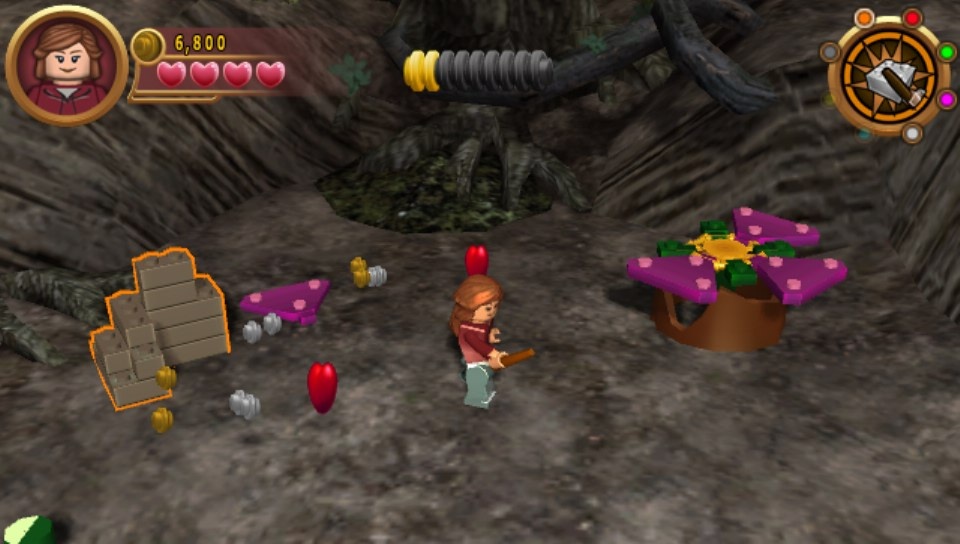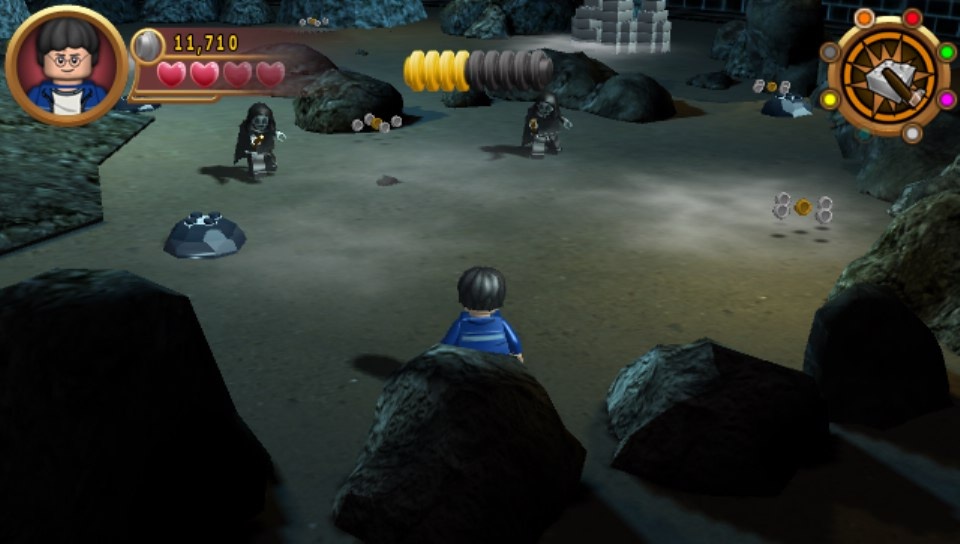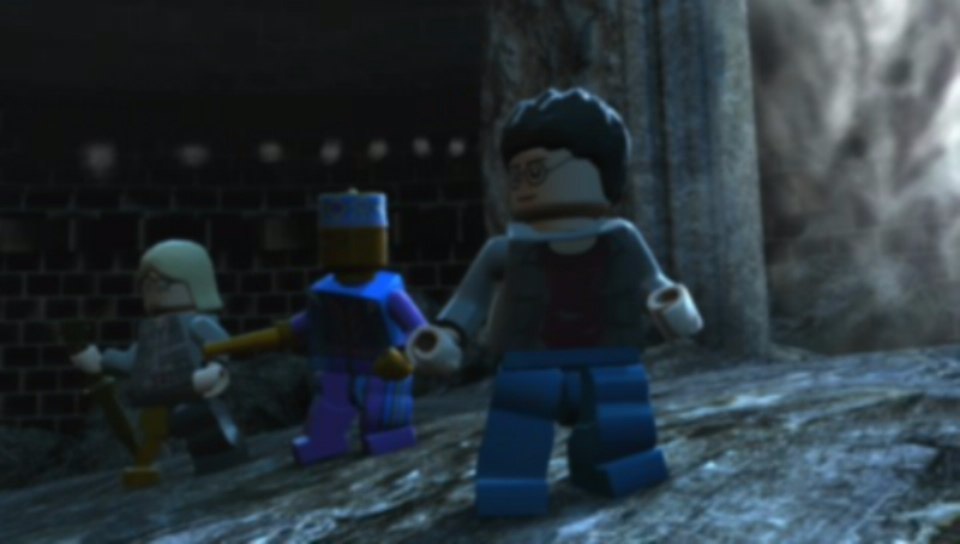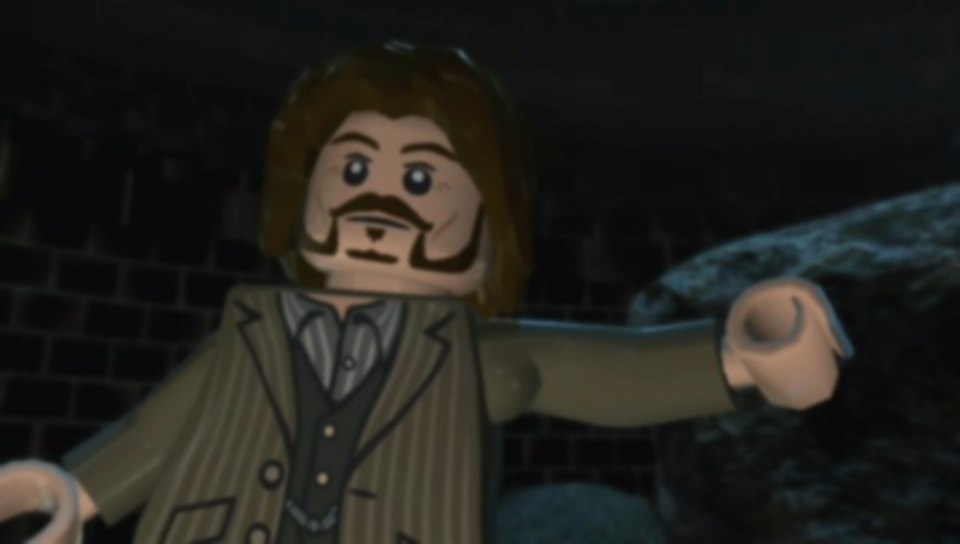Harry Potter's innocent days are over. The boarding school antics have trickled to a halt, classrooms have gone silent, and even Quidditch matches--once the mark of happier times--have fallen by the wayside. In their place, a much darker picture has taken shape, marked by the ever-increasing fear of death. As far as stories go, it's not exactly a walk in the park, but it's nothing that a good Lego sense of humour can't handle.
Like its predecessor, Lego Harry Potter: Years 5-7 excels at finding the true heart of the story it is trying to tell, layering this otherwise bleak premise with its own particular brand of cheekiness without sacrificing the essence of J.K. Rowling's world. This is a fun, richly detailed game that rewards curiosity and offers plenty of gameplay variety, making it well worth the effort for Lego and Harry Potter fans alike.
Lego Harry Potter: Years 5-7 weaves together events from the final three Harry Potter books and the final four films. Despite the necessary liberties taken to mesh three narratives into one, the game manages to employ a multifaceted structure that is easy to navigate: each of the four chapters of the game is divided into smaller subchapters, each comprising a new part of the story. While the Vita version is a slightly simplified version of the console game (for example, cutscenes sometimes replace extended gameplay sequences, and some activities are different), it loses none of the charm.
The gameplay is consistent with past Lego games: each short level requires you to complete a series of puzzle-solving tasks using a range of character abilities while knocking down and rebuilding large parts of the environment. There are also myriad side missions, quests, and collectibles. While the game's story moves along with effortless charm, it's the collectible element that adds both variety and replay value.

There's a certain kind of addictive satisfaction that comes with collecting absolutely everything, and the game rewards this interactivity in a multitude of ways: 200 gold bricks, 24 school emblems, 20 cheats, and the fulfilment of becoming a "True Wizard" stud collector. It's also smart about the way it does this: only a proper playthrough unlocks all the characters and their respective abilities, and given that a lot of the game's environments feature areas and puzzles that are not immediately accessible, this adds a good incentive for a later reexamination.
The Vita version of the game employs a number of touch-screen controls, which work well for some activities and not so well for others. For example, throughout the game you have access to eight spells, acquired in stages and presented in a spell-wheel system that can be cycled through on the fly, using either the right or left bumper or the touch screen. The game has made things a lot easier by eliminating the need for a lock-on mechanism, meaning you can shoot spells out of your wand to your heart's content or use the crosshairs when there is something specific you want to target. Casting spells with the button controls is simple enough: use the square button and the thumbstick to target and fire.
You're also supposed to be able to charge and aim spells using the touch screen, but this never works as well as the button layout--the touch screen very often does not recognise where you want to aim the spell, and your character ends up shooting randomly. It's much simpler--and quicker--to use the buttons. The touch screen does come in handy during duelling, however, where you can block spells by simply swiping left or right. You can also use the touch screen to select highlighted objects that can be magicked by holding your finger on the object and then making a rotating motion, which activates the spell; again, this usually proves simpler and quicker with the buttons.

The addition of Weasley Boxes in the game goes towards helping make the experience feel new; the boxes themselves--which contain numerous joke products providing special abilities for the surrounding puzzles--can be accessed only by members of the Weasley family, making red-haired companions a must in the free-play levels and providing you with an incentive to switch between characters more often. There are also Luna Lovegood's Spectre Specs, which let you see and build with invisible Lego bricks.
As in other Lego games, there are certain exemplary moments full of well-dressed charm: Dumbledore's botched escape from his office in Order of the Phoenix, Harry's awkward romantic entanglements in Half-Blood Prince, and Snape's grisly death at the hand of Voldemort for the horrendous crime of eating all the muffins. This well-maintained lighthearted tone--a hallmark of all Lego games--is possible here due in large part to the attention to detail paid in the game's design.
The game's environments are well detailed and contextually accurate, providing a rich backdrop for the action. The cutscenes re-create some of the film series' most inspired moments; the opening scene of Half-Blood Prince is a particularly fine example of this. They succeed in doing justice to the story's darker tone through the expertly crafted flashback sequences which are presented in a striking, sepia-toned aesthetic that reflects the maturity of the source material.

But it's not all smooth sailing. The loading times can be a bit of a bore, especially since the game requires a substantial amount of time to load even when you're walking in between rooms and scenes. There's also a slight inconsistency with some of the game's smaller tasks, which are inserted at various moments throughout the story but have little bearing on what's happening. This is irksome only during the particularly high-tension moments, some of which are peppered with a number of bafflingly mundane activities, like building a cart or collecting ingredients for a potion. Thankfully, these moments are infrequent.
For those who aren't ready to say good-bye to Harry Potter just yet, Lego Harry Potter: Years 5-7 is a charming way to stay inside J.K. Rowling's magical world a little bit longer. Despite the occasional slipup, the game successfully builds on the original story to offer a simple yet satisfying experience that has depth and replay value. There's enough to engage and have fun with to appeal to fans of Harry Potter as well as fans of previous Lego games.
